Michele Hamill
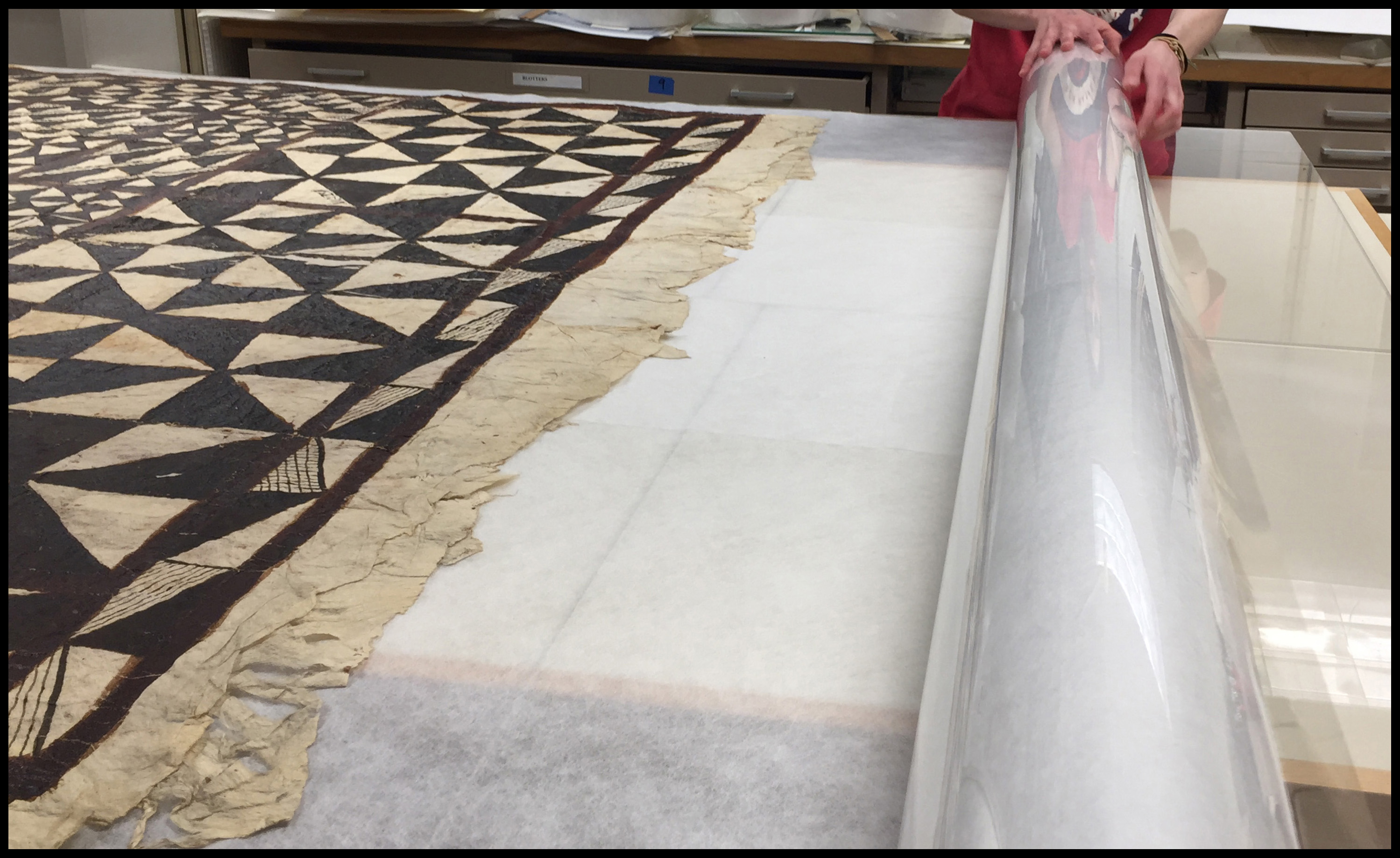 Some paper artifacts, like oversize maps, posters, and architectural drawings and plans, are larger than available flat storage so a practical solution is to roll them. It’s tempting to roll oversize artifacts tightly and put them inside narrow cardboard tubes to save space. But, in the case of oversize paper artifacts, it’s better to be on the outside of the tube. Wait—how is it safer to store artifacts on the outside of a tube rather than placing them inside? The first problem starts because tightly rolled paper artifacts placed inside a tube spring open and expand to fit the interior diameter of the tube. (If you’ve ever tried to pull a poster out of a mailing tube, you know it’s hard to reach in the tube and remove it without tugging or having it telescope, with one end of the poster still stuck firmly in the tube). To add to the first problem, when stored under fluctuating environmental conditions, multiple artifacts inside a tube can become impacted—pressed so firmly together and restricted by the tube–they won’t budge. Then add in age and brittleness and artifacts inside tubes become stuck.
Some paper artifacts, like oversize maps, posters, and architectural drawings and plans, are larger than available flat storage so a practical solution is to roll them. It’s tempting to roll oversize artifacts tightly and put them inside narrow cardboard tubes to save space. But, in the case of oversize paper artifacts, it’s better to be on the outside of the tube. Wait—how is it safer to store artifacts on the outside of a tube rather than placing them inside? The first problem starts because tightly rolled paper artifacts placed inside a tube spring open and expand to fit the interior diameter of the tube. (If you’ve ever tried to pull a poster out of a mailing tube, you know it’s hard to reach in the tube and remove it without tugging or having it telescope, with one end of the poster still stuck firmly in the tube). To add to the first problem, when stored under fluctuating environmental conditions, multiple artifacts inside a tube can become impacted—pressed so firmly together and restricted by the tube–they won’t budge. Then add in age and brittleness and artifacts inside tubes become stuck.
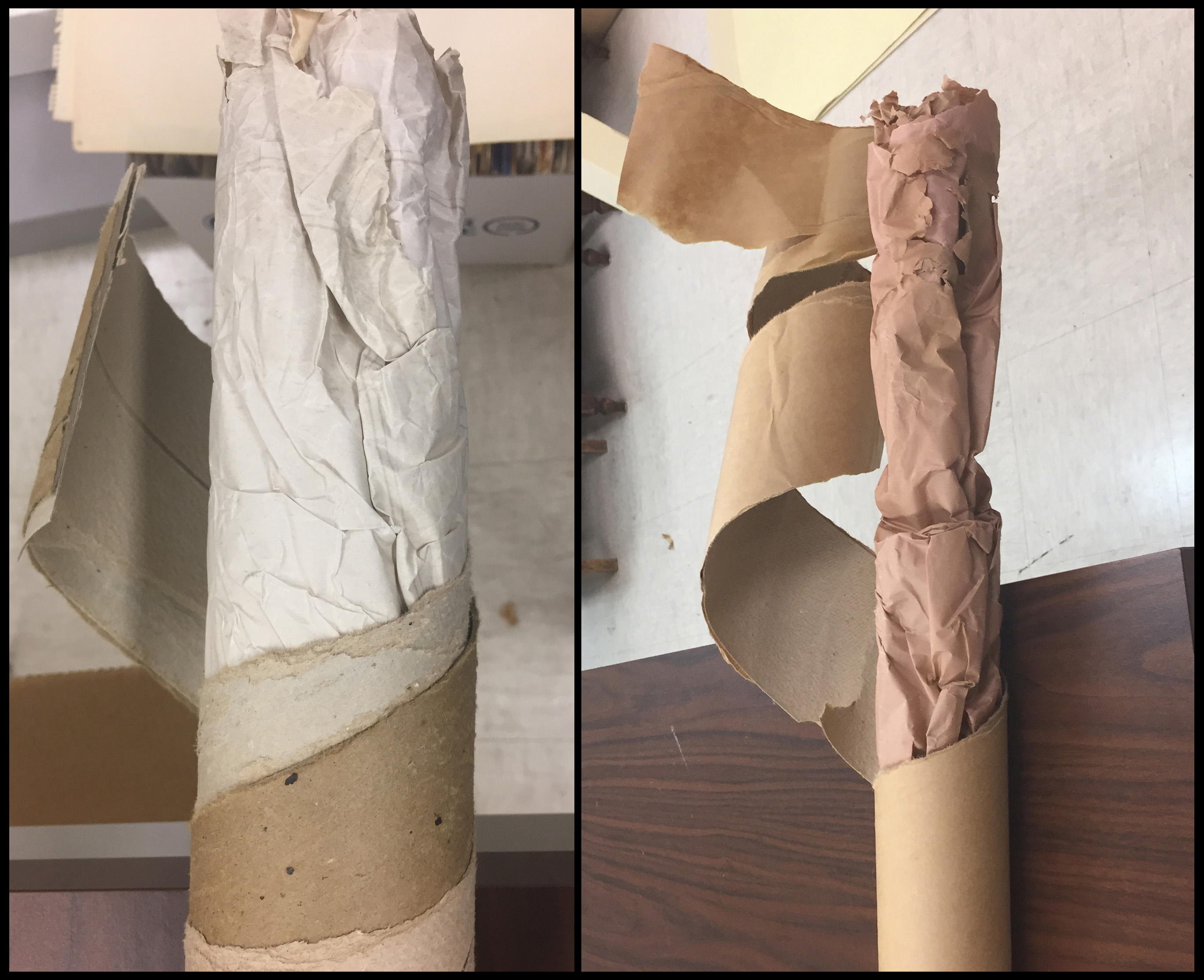
The cardboard tubes holding these architectural drawings had to be cut away to free the drawings safely.
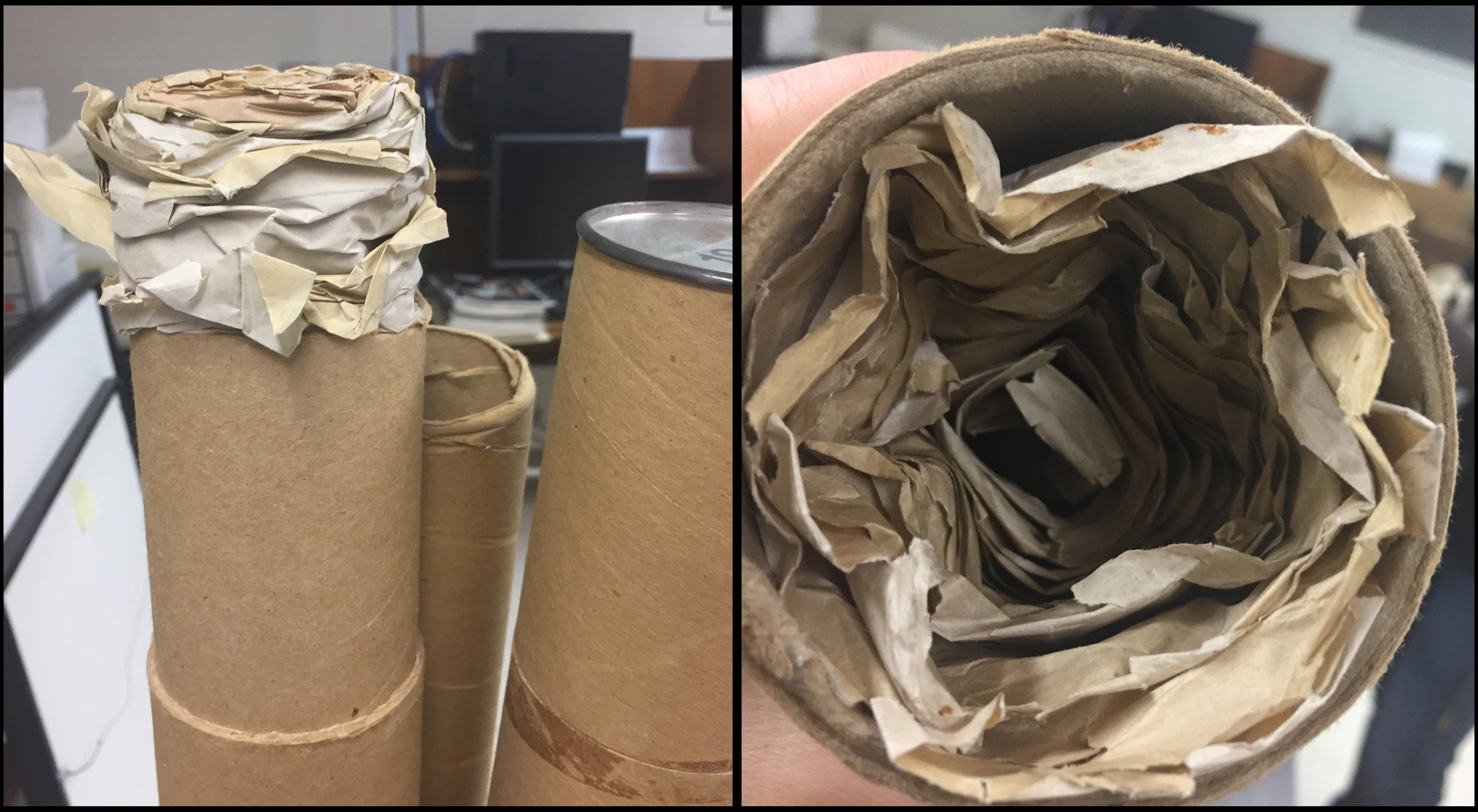
Rolled artifacts are safest stored horizontally. If stored vertically, the contents slip down and the edges become damaged by weight and compression.
Rolling on the outside of the tube provides firm support for the artifact, distributing its weight, and avoids the artifact from getting compacted and stuck in the tube. Rolled storage can be a good choice for large paper artifacts in good condition with enough flexibility to withstand rolling and unrolling. The recommended method of rolling oversize artifacts is to roll onto a tube with a large diameter–the larger the diameter, the gentler it is on the artifact. Multiple artifacts of similar size, condition, and related content may be rolled together, especially if they aren’t used frequently. Acid-free, buffered tubes are the best but wider diameters and longer lengths increase in price. A non-archival tube can be used if a barrier layer of polyester film covers the tube and is securely held in place (double-sided tape works—just be sure it is fully underneath the barrier layer).

This fragile barkcloth was rolled onto a wide diameter tube. The artifact, face up, was laid on polyester webbing (polyester film and archival paper are other good choices), with enough extra material at the start to roll onto the tube first. In this way, the support layer can also act as interleaving and provide support, protection, and cushioning. Rolling oversize artifacts can be a 2-person job.
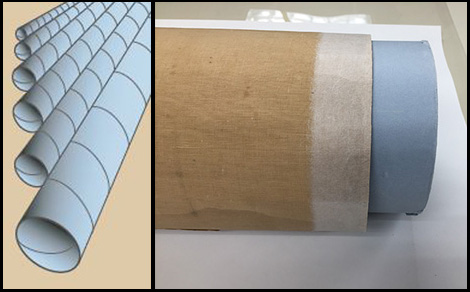
Preservation supply companies offer archival tubes in different lengths and diameters. The tube should be longer than the artifact on both sides to protect the edges of the artifact from being crushed. Long tubes can be cut with a saw to desired lengths.
After rolling, the tube is covered with an outer layer of sturdy archival paper and/or polyester film for light and dust protection. The newly rolled artifact should be stored horizontally in a single layer on a supportive surface (the top of map cases can work if not too high). It may be desirable to lift the ends of the tube up, using foam supports or cradles, so a fragile artifact is not bearing any weight.

The outer protective layer can be secured with Velcro (the self-fastener type is handy), or wide cloth ties, and labeled with an image and description of the contents for easier identification and retrieval.
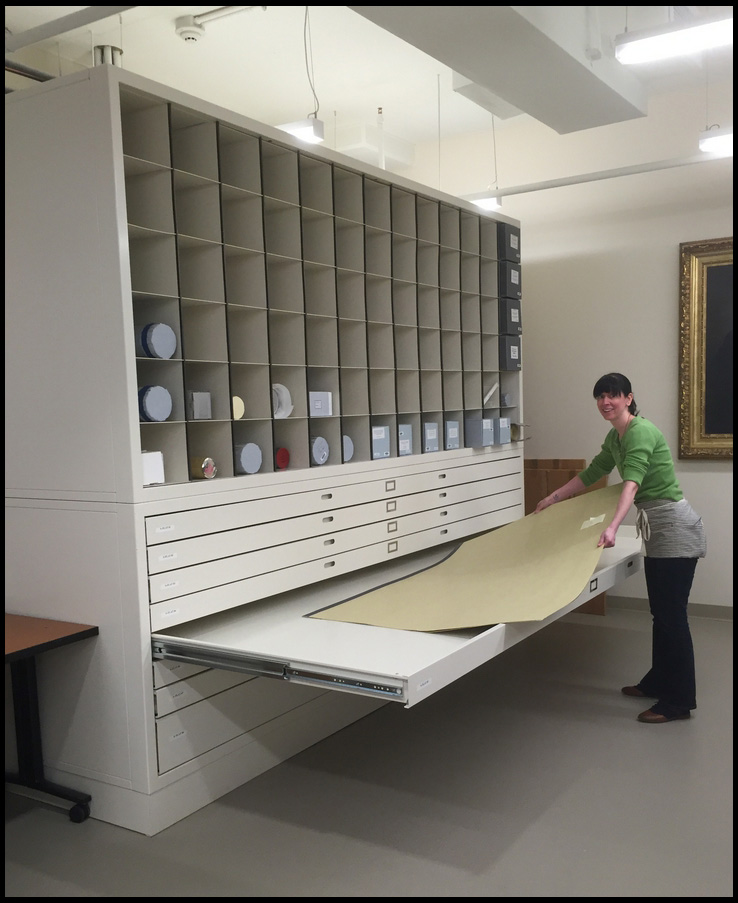
Flat storage is preferred, but sometimes the large size of collection materials necessitates rolled storage. In the recently renovated stacks space of the Rubenstein Library at Duke University, they have incorporated both solutions–oversize flat drawer storage as well as a custom cabinet to store rolled collection materials and tube boxes. Image courtesy of Duke University Libraries.

Tube boxes are another alternative and can be stacked in small groups for efficient storage. The contents can be rolled on tubes that fit inside the boxes. Tube boxes also provide good protection for collection materials, like rolls of modern posters, that are safe to store temporarily rolled without tube support.
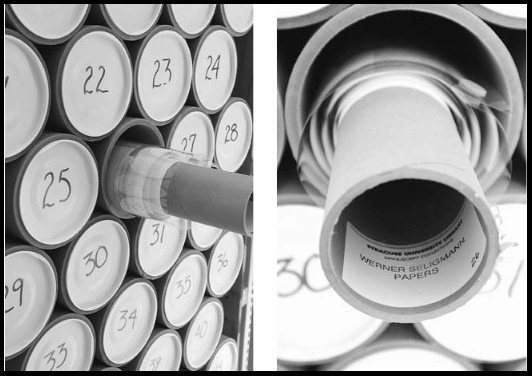
Some institutions have created an efficient, supportive honeycomb system of rolled artifacts on tubes placed inside wider diameter tubes. Image courtesy of Syracuse University Photo and Imaging Center.
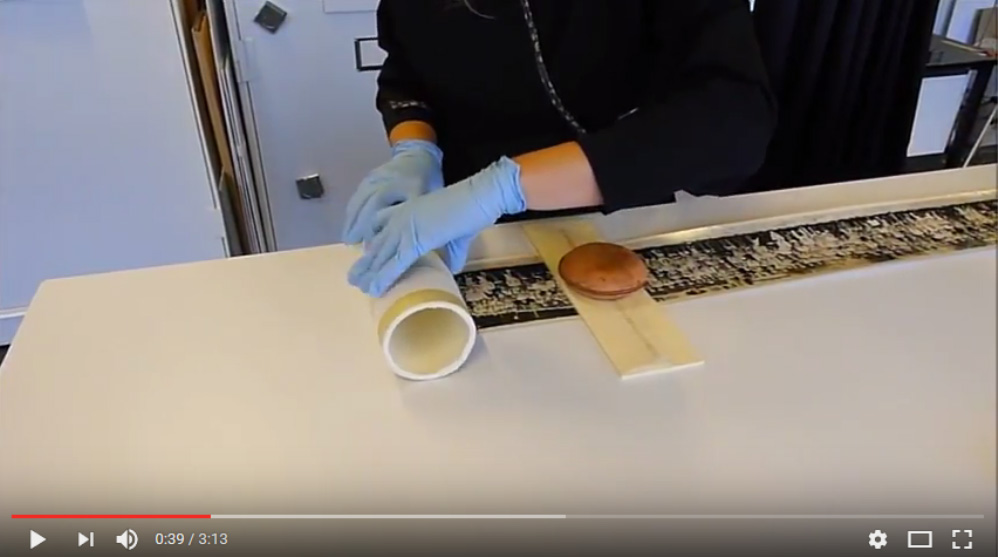
This video from the Smithsonian Libraries Archives shows a treated panorama photograph being carefully rolled onto an archival tube. Only panorama photographs in good condition, with intact emulsions, and good flexibility can be rolled.
 Libraries and archives have an abundance of rolled collection materials. After stabilization, they are stored flat when possible. If not, now you know how we roll.
Libraries and archives have an abundance of rolled collection materials. After stabilization, they are stored flat when possible. If not, now you know how we roll.